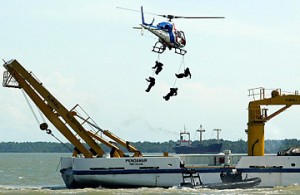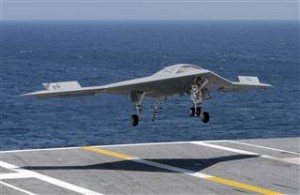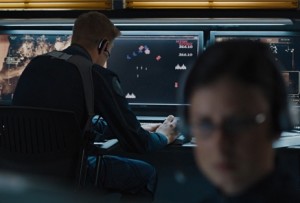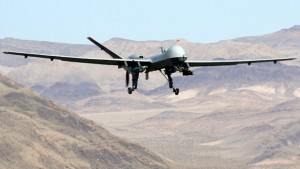Five months after the much-dreaded sequestration went into effect, many defense analysts and military officials alike are worried about the negative repercussions of the drastic budget cuts on military readiness. In his latest commentary, the rightwing commentator Alan Caruba declared that “The U.S. military is on life support.” Defense Secretary Chuck Hagel also argued in his Statement on Strategic Choices and Management Review (SCMR) that “sequester-level cuts would ‘break’ some parts of the strategy, no matter how the cuts were made [since] our military options and flexibility will be severely constrained.”

To its credit, the SCMR seemed to hint at operational and structural adjustments underway by offering two options—trading “size for high-end capacity” versus trading modernization plans “for a larger force better able to project power.” Nevertheless, one important question which went unasked was whether or not the US Armed Forces alone should continue to play GloboCop.
The current geostrategic environment has become fluid and fraught with uncertainties. As Zhang Yunan avers, China as a “moderate revisionist” will not likely replace the United States as the undisputed global champion due to myriad factors. As for the United States, in the aftermath of a decade-long war on terror and the ongoing recession, we can no longer say with certainty that the United States will still retain its unipolar hegemony in the years or decades to come.
That said, Secretary Hagel is correct that the United States military may need to become leaner in the face of harsh fiscal realities. To this must be added another imperative: The US Armed Forces must fight smarter and must do so in ways that may further America’s strategic and commercial interests abroad.
So how can the United States military fight smarter and leaner?

First, given massive troop reductions whereby the Army personnel may be reduced to 380,000 and the Marine Corps “would bottom out at 150,000,” while at the same, the DoD is seriously considering restructuring existing Combatant Commands (COCOMs), it no longer makes sense to deploy or train troops for protracted counterinsurgency campaigns or foreign occupations. Instead, should another transnational terrorist group or a rogue state threaten homeland security, the United States could rely on SOF (Special Operations Forces) commandos and UAV (Unmanned Aerial Vehicles) to selectively target and neutralize potential threats. While the SOF and UAV surgical raids should not be viewed as substitutes for deft diplomacy, they can provide cheaper and selective power projection capabilities.
Second, since the United States Navy may be forced to “reduce the number of carrier strike groups from 11 to 8 or 9,” it can meet its power projection needs by encouraging cooperation among its sister navies and by bolstering their naval might. One example of such partnerships would be to form a combined fleet whereby America’s sister navies “may share their unique resources and cultures to develop flexible responses against future threats” posed by our adversaries.
Third, the United States may encounter more asymmetric threats in the form of cyber attacks, CBRN (Chemical, Biological, Radiation, Nuclear) attacks, and may also be subjected to attacks from within by homegrown terrorists and drug cartels—all of which may wreak havoc and may even cripple America’s domestic infrastructures. As retired Admiral James Stavridis argues, such asymmetric attacks may stem from convergence of the global community. Such threats require that the United States take the fight to its adversaries by cooperating with its allies to “upend threat financing” and by strengthening its cyber capabilities.
Fourth, where rogue states such as Iran, Syria and North Korea, are concerned, the United States could implement what General James Mattis refers to as the “proxy strategy.” Under this arrangement, while “America’s general visibility would decline,” its allies and proxies would police the trouble spots on its behalf.
Fifth, the United States must be prepared to defend homeland against potential missile attacks from afar. The United States may be vulnerable to hostile aggressions from afar following North Korea’s successful testing of its long-range rocket last December and Iran’s improved missile capabilities. Thus, improving its missile defense system will allow greater flexibility in America’s strategic responses both at home and abroad.
Last but not least, the United States Armed Forces needs to produce within its ranks officers who are quick to grasp and adapt to fluid geostrategic environments. One solution, as Thomas E. Ricks proposes, would be to resort to a wholesale firing of incompetent generals and admirals. However, it should be noted that rather than addressing the problem, such dismissals would ultimately breed resentment towards not only the senior brass but civilian overseers, which will no doubt exacerbate civil-military relations that has already soured to a considerable degree. Instead, a better alternative would be reform America’s officer training systems so that they may produce commanders who possess not only professional depth but breadth needed to adapt to fluid tactical, operational, and strategic tempos.

Despite the hysteric outcries from the service chiefs and many defense analysts, in the end, the sequestration may not be as dire as it sounds. In fact, Gordon Adams argues that after several years of reductions, “the defense budget…creeps upward about half a percentage point every year from FY (Fiscal Year) 2015 to FY 2021.” Simply stated, one way or the other, the US Armed Forces may eventually get what it asks for–as it always has been the case. Nonetheless, the sequestration “ordeal”—if we should call it as such—offers the US military object lessons on frugality and flexibility. Indeed, American generals and admirals would do well to listen to General Mattis who recently admonished them to “stop sucking their thumbs and whining about sequestration, telling the world we’re weak,” and get on with the program.
Note: This article was originally published in its original form in the Naval Institute’s blog and was cross-posted by permission.
Jeong Lee is a freelance writer and is also a Contributing Analyst for Wikistrat’s Asia-Pacific Desk. Lee’s writings on US defense and foreign policy issues and inter-Korean affairs have appeared on various online publications including East Asia Forum, the Georgetown Journal of International Affairs, the World Outline and CIMSEC’s NextWar blog.








